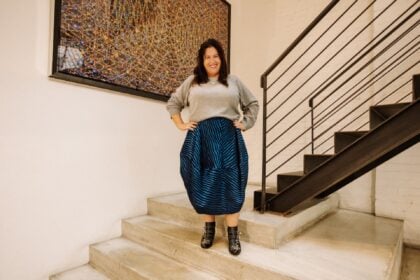JCDecaux hosted a packed event in Sydney on Wednesday evening, telling the great and the good of media agencies that “seven out of 10 out-of-home (OOH) ads don’t really work as hard as they do” thanks to some research that it conducted with ad effectiveness doyens System1.
“I’ve been researching OOH with JCDecaux globally now for a few years,” said Andrew Tindall, System1’s senior vice president of global partnerships.
“And we’ve got to quite a shocking headline… How have we got here? Around half of OOH doesn’t get enough recognition quick enough, essentially. Then half of that doesn’t leave a strong-enough emotional impression to influence future behaviour. So half and half we get to seven out of 10 OOH ads don’t really work as hard as they could do.”

It’s a stat that might make many in the agency world quake. It certainly did for Raj Gupta, UM’s chief strategy and growth officer—or at least surprised him.
“I am surprised… I thought, ‘Have I been making some bad decisions for clients’. Because if I really believe that number to be true, I have been making those decisions. I went and checked some data on the clients we work for, I’m proud to say… that number doesn’t fall into place.”
Meanwhile, Sarah Myers, REA Group’s GM audience and marketing, said that she wasn’t particularly surprised. Kaimera handles REA’s media with 72andSunny on creative.
“I think the power of simplicity and really understanding the hierarchy of messaging in outdoor is something that isn’t respected at scale. As humans, we have an addition bias. We’re always trying to add more into everything. We’ve got a lot to say but I think there’s a lot when it comes to taking things off.”
During the session, System1’s Tindall boiled down effective OOH creative to “showmanship” creative insights: brand fast, don’t be dull, stay consistent, attention changes minds, less is more, make them feel good and put on a show.
“OOH must put on a show to capture emotion and leave people feeling good… We can literally see that posters with more ‘salesmanship’ features get lower star ratings but posters with more of these ‘showmanship’ features get higher start ratings. OOH must put on a show to double the commercial impact in market,” he said.
Supporting the point, JCDecaux’s national product director and self-confessed screen nerd Sam Noble, said that “large format memorability is primarily driven by visual distinctiveness”.
“That’s size, colour and placement rather than the actual brand message. The shining example was Telstra’s 2D special build creative that commanded some of the highest attention of any large format site in the entire study,” Noble said.
“It also significantly reduced the attention of a competitor’s digital billboard within direct proximity.”
In short, JCDecaux’s research shows that agencies best serve their clients with OOH creative that is bold, simple and likely to make punters smile. That might not sound surprising. So why does adland miss the mark?
Doing Less, Not More
“The responsibility is on all of us in the room as brand asset managers, that’s what we do whether we’re client-side, creative-side or media-side, is to figure out where our brand sits in the life cycle, in the market,” said Chris Howatson, founder and CEO of Howatson+Company, also speaking on the panel.
Howatson name-checked three of the campaigns as highlighted by Tindall, saying the effectively met some of his points around creative effectiveness from Ocean Spray featuring just its bottle, Air New Zealand’s campaigns featuring its goose mascot and some of McDonald’s work. But he cautioned that brands should not try to solve all of the objectives in one campaign.

“It breaks one of his objectives, which is single-minded messaging. You’ve got to understand what assets your brand has and apply those in a meaningful way,” he said.
However, these objectives might not apply to all brands. Myers’ REA has very distinctive codes—its red brand colour and house-shaped logo, for instance. Howatson+Company runs creative for REA’s big rival, Domain. Omnicom’s PHD runs its media.

“If you look at the Coke ad that was up on the screen before, we probably didn’t even realise that the background was red and a proxy for the brand. I was looking at the wonderful photography and wondering whether it was AI… That ad has got emotional resonance built into it because of the years of storytelling that the brand has got to that point,” said Howatson.
“But if you took two people cheers-ing a Pepsi, that probably wouldn’t make sense. Brand narrative is built over a very long time and, I think, OOH is the purest brand medium right now where you can hone all of those components into the feeling of that brand.

“So whether it’s rational leadership, and you do that by going number one, foremost listings, or whether it’s about mateship and coming together, like the Coca-Cola one, you’ve got to find your brand core. It comes back to what I said earlier, you can’t take a list and tick every box and there’s your ad. You’ve got to figure out where your brand is in its market penetration by category, then figure out what your role is and what channels you pick.”
Myers said her biggest takeaway from the day was “the power of simplicity. Make the logo bigger”. Perhaps it has been that easy all along.










